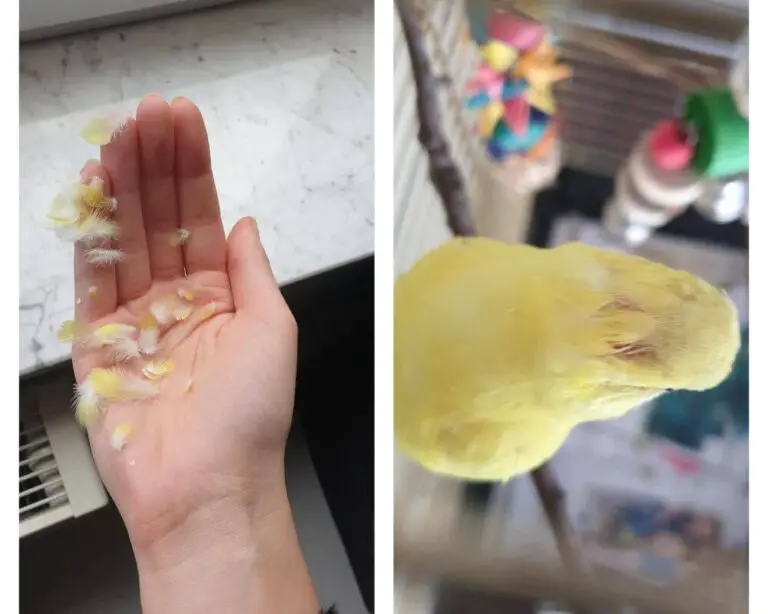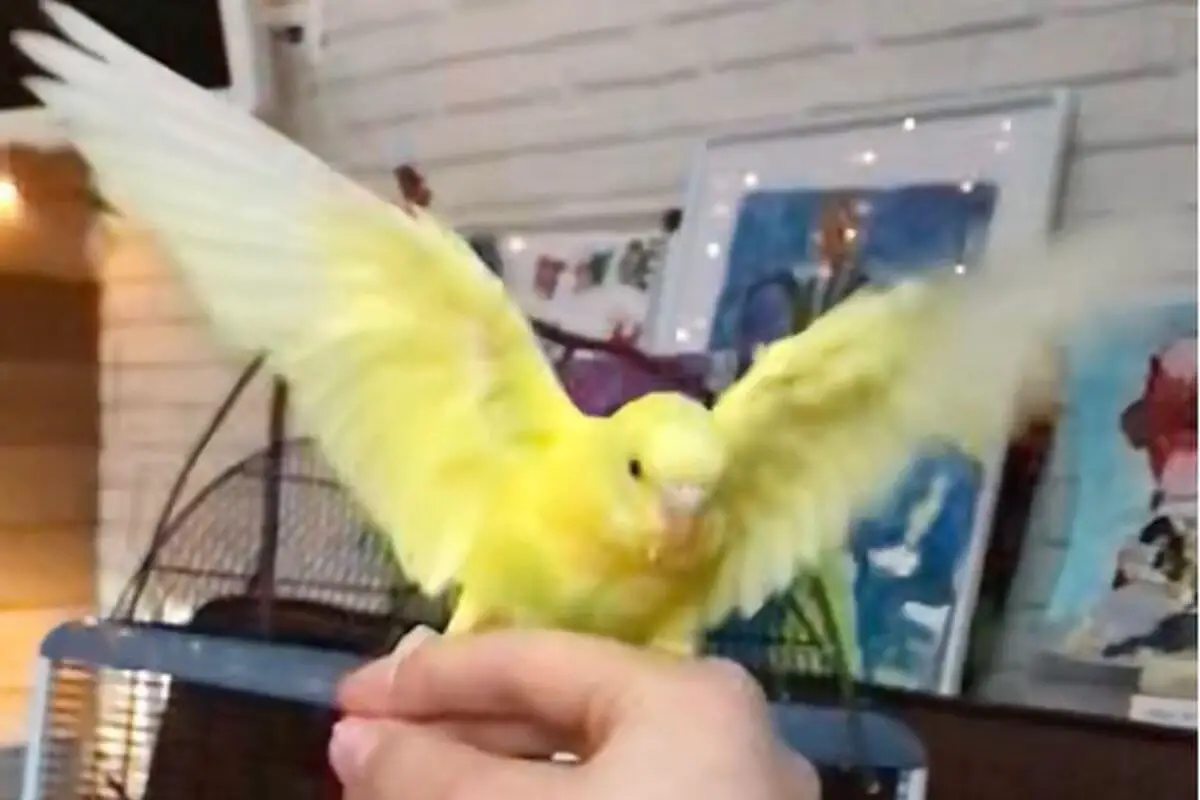Budgies are active birds and like to move around. If my budgie is not moving, there could be several reasons why.
When I saw my budgie Simon not moving when it was a baby, I was worried, and I asked myself why is my parakeet not moving.
I discovered several reasons why a budgie might not be moving.
The most common reason budgies become less active is that they are moulting or get sick, scared, or cold.
In this post, we will explore some of the most common reasons why a budgie might not be moving and provide solutions so that you can help get your bird moving again.
Table of contents
Understand Normal Parakeet Behavior
The first step in determining why your budgie is not moving is understanding what is considered normal behaviour for a parakeet.
While every budgie is different, there are some general things that you can expect from your bird in terms of activity level.
Most budgies are relatively active during the day and like to move around their cage. They may fly from perch to perch or play with toys.
At night, budgies usually sleep on a perch or in a nest box. You may find that your budgie is less active at night, but this is normal behavior.
If you notice that your budgie is not moving around as much as usual or is not behaving in the way that you would expect, this could be a sign that something is wrong.
What are the Reasons Why My Parakeet is Not Moving?
There are several reasons why a budgie might become less active. We will explore some of these reasons below.
1- Molting

One of the most common reasons why budgies become less active is because they are molting.
Molting is a process that birds go through in which they shed their old feathers and grow new ones.
Budgies usually molt once or twice a year, although some budgies may molt more frequently.
During a molt, a budgie will often stop moving around as much and may even spend more time sleeping.
If you notice that your budgie is molting, there is no need to be concerned. This is a normal process that all birds go through.
2- Sickness
Another reason why your budgie might not be moving is that it is sick.
There are a number of different illnesses that can affect budgies, some of which can cause a decrease in activity level.
If you think that your budgie might be sick, it is important to take it to the vet for a check-up.

3- Stress
Budgies can also become less active when they are stressed. There are a number of different things that can cause stress in budgies, including:
- A change in the environment.
- Lack of social interaction.
- A change in diet.
If you think that your budgie might be stressed, Read our article on how to make your budgie happy.
4- Cold
Budgies are tropical birds and need a warm environment to stay healthy. If the temperature in their environment drops too low, they may become less active in an attempt to conserve body heat.
If you think that your budgie might be cold, you can try increasing the temperature in its environment.
5- boredom
Budgies are playful birds and need a stimulating environment to stay happy and healthy. They may become bored if they are not provided with enough toys and perches to keep them occupied.
Bored budgies may become less active and may even start to pluck their feathers.
6- Scare
Budgies may also become less active if they are scared. This can happen if there is a loud noise or if there is something in their environment that is frightening them.
If you think your budgie is scared, you can try to remove the source of the fear and make sure its environment is calm and quiet
Should I Be Concerned if My Budgie Isn’t Moving?
You should be concerned if your budgie isn’t moving and you can’t figure out why.
If your budgie is not moving as much as usual, it is important to observe your bird closely to see if there are any other changes in its behavior. Some other signs that something may be wrong include:
- Fluffed up feathers.
- Sleeping more than usual.
- Loss of appetite.
- Change in vocalisations.
- Discharge from the eyes or nose.
- Change in colour of the cere.
If you notice any of these signs, it is important to take your budgie to the vet for a check-up.

Tips for Moving a Budgie Into a New Home
If you have determined that there is no medical reason why your budgie is not moving, there are a few things that you can do to try to get your bird active again.
1- Provide toys and perches:
One way to keep your budgie from getting bored is to provide it with plenty of toys and perches.
This will give your bird something to do and help keep its mind active.

2- Get a companion:
Another way to help your budgie become more active is to get it a companion.
Budgies are social birds and do best when they are kept in pairs.

3- Take it out of its cage:
Another way to help your budgie become more active is to take it out of its cage for a little while each day.
This will allow your bird to fly and explore and play. Just make sure that you supervise your budgie closely to make sure that it doesn’t get into any trouble.

4- Limit Transition Time:
When moving your budgie to a new home, it is important to limit the amount of time it spends in transition.
5- Cover the Cage:
One way to help reduce stress in your budgie is to cover its cage when it is not in use.
This will create a more private and secure environment for your bird. You can also try playing soft music or using a white noise machine to help reduce stress levels.
The best cage cover that reduces distractions and aids in better sleep for your bird
6- Avoid Touching:
One way to reduce stress in your budgie is to avoid touching it. Budgies are very sensitive and can be easily scared by being touched.
If you must touch your budgie, it is important to do so gently and calmly.
Final Thought
If your budgie is not moving, it is important to observe your bird closely to see if there are any other changes in its behavior.
If you notice any other changes, taking your budgie to the vet is important for a check-up.
If you can’t figure out why your budgie isn’t moving, there are a few things that you can do to try to get your bird active again.
These include providing toys and perches, getting a companion, and taking your budgie out of its cage.
Remember to supervise your budgie closely if it is out of its cage. If you have any concerns, it is always best to consult with a veterinarian.






Leave a Reply